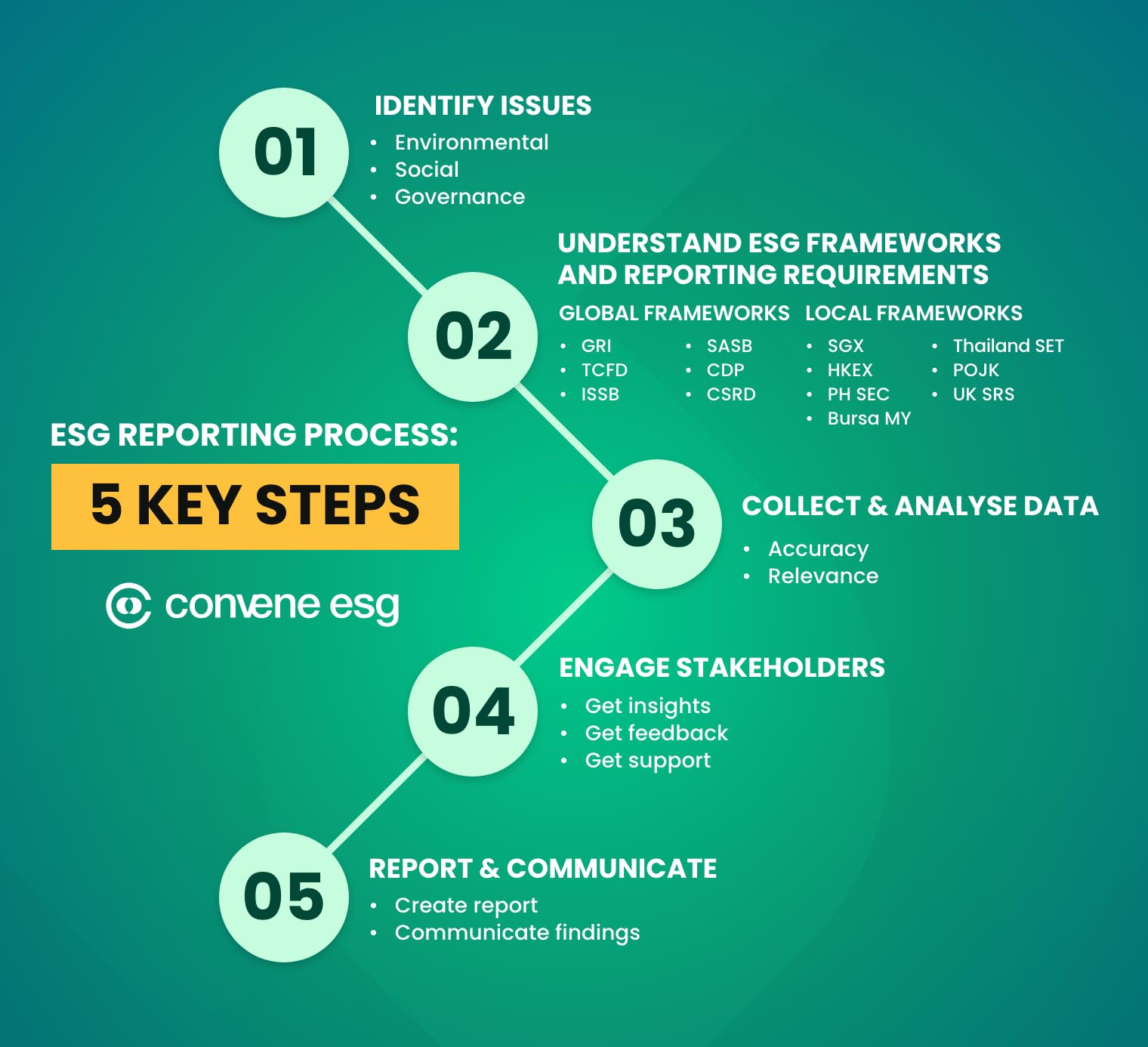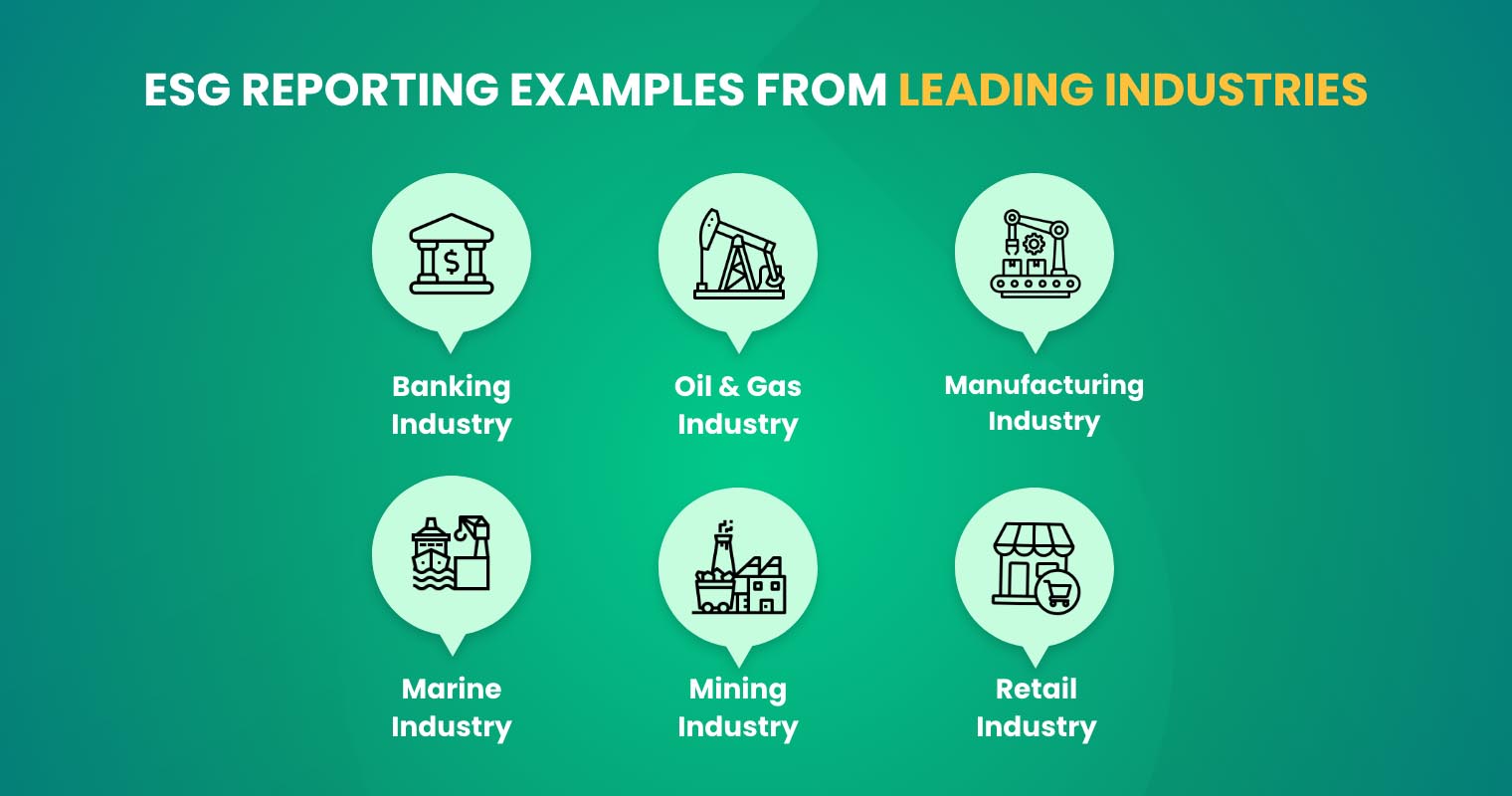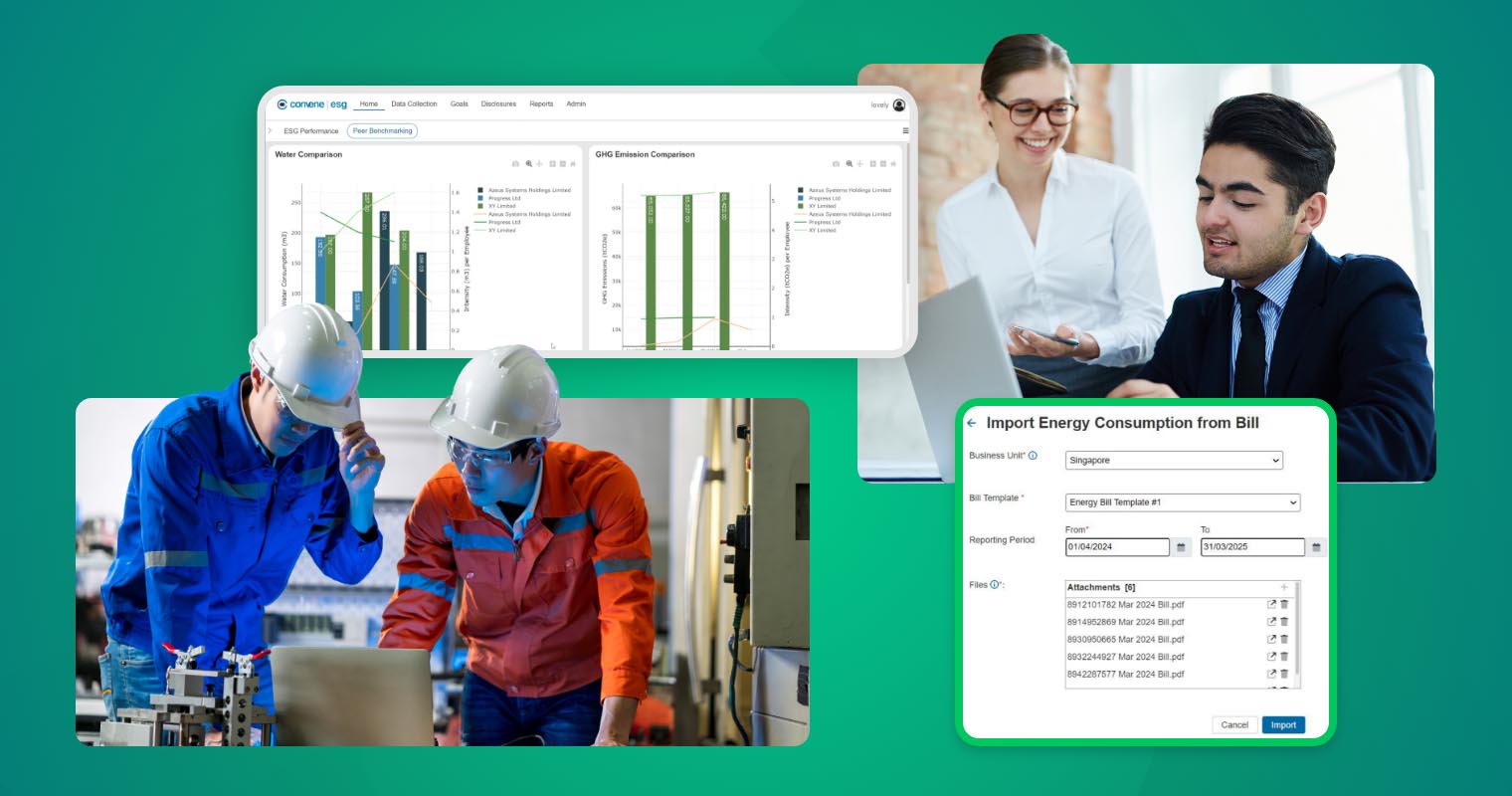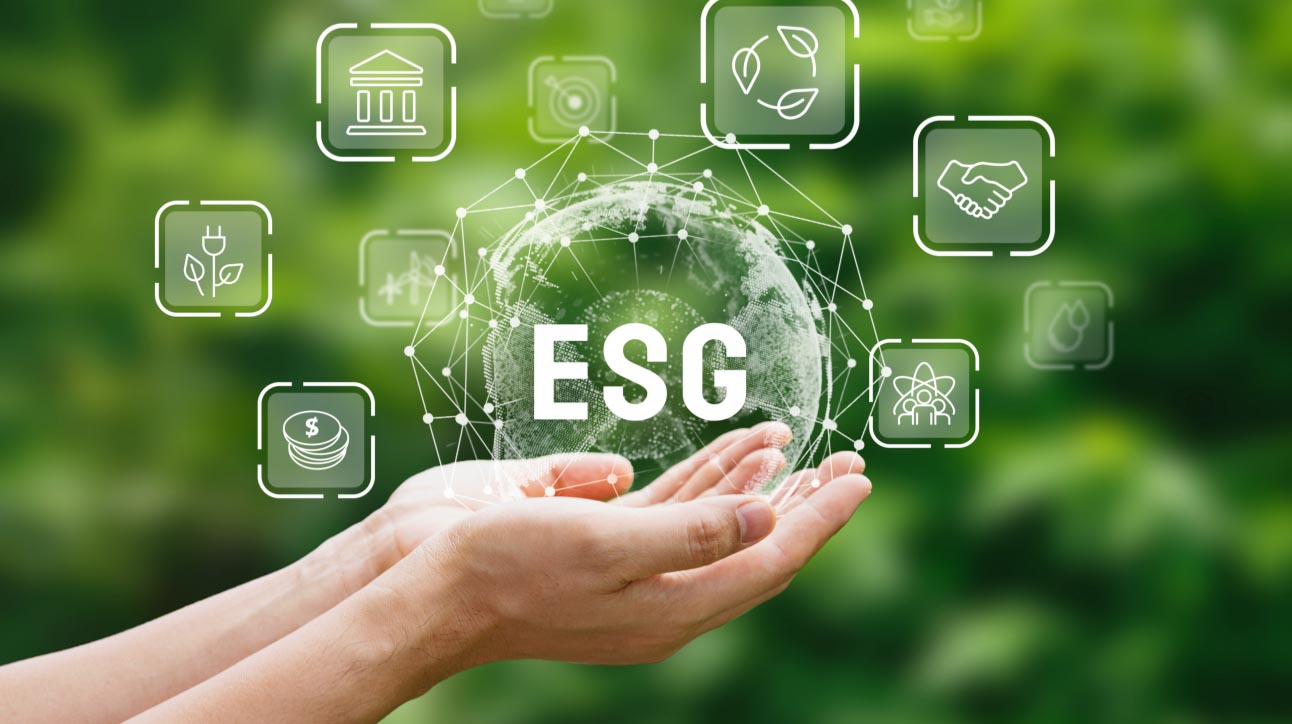The corporate world is entering a new era of accountability, where adopting well-thought-out environmental, social, and governance (ESG) strategies is no longer optional. ESG reporting is changing how success is measured in industries and companies now need to focus on sustainability and accuracy. Not just meeting regulatory demands, but also building stronger connections with their stakeholders and communities. From environmental preservation to social impact and governance transparency, businesses can use these initiatives to respond to global challenges and guarantee their future in the market and social sphere.
What is an ESG report?
An ESG report is a document that outlines a company’s performance in three key areas — environmental, social, and governance. It provides information about the company’s efforts and impact on environmental sustainability, social responsibility, and ethical governance practices. The report helps stakeholders, including investors and the public, understand how the company addresses these important factors and its commitment to responsible business practices.
ESG Reporting Process: 5 Key Steps

The process involves a strategic approach to capturing, analysing, and communicating key environmental, social, and governance factors. By following these steps, ESG reporting companies can produce a strong and accurate ESG report:
- Identify Issues: Determine the most relevant material topics in environment, social, and governance categories that are significant in your organisation and stakeholders. These can be climate-related issues and biodiversity for the environment, employee welfare and diversity in social, and stakeholder relations and transparency for governance.
- Understand and Adhere to ESG Frameworks and Requirements: Familiarise yourself with established ESG reporting frameworks such as GRI, SASB, CDP, and TCFD or region-specific like SGX in Singapore and CSRD in EU to guide your metrics for your ESG goals and reporting process.
- Data Collection and Analysis: Gather and assess data related to ESG factors, ensuring accuracy and relevance to your reporting objectives.
- Engaging Stakeholders: Involve internal and external stakeholders in gaining insights, feedback, and support for your ESG reporting initiatives.
- Report Creation and Communication: Compile the findings into a structured ESG sustainability report and communicate the outcomes to stakeholders, demonstrating transparency and accountability.
Who reads ESG reports?
As an important indicator of a company’s resolve towards efficient utilisation of resources and commitment, ESG annual reports have become the focal or central area of concern across different stakeholder groups. So, who reads these reports?
- Consumers and Influencers: Today’s consumers care about the sustainability of the brands they support. The best ESG reports provide the transparency they need to make ethical purchasing decisions. Influencers and opinion leaders rely on these reports to shape public perceptions and drive broader social change.
- Investors: They study and look for proof that a company is addressing ESG risks and seizing sustainability opportunities. They want to know that ESG is a core part of the company’s strategy. Companies with strong ESG reporting often enjoy better long-term financial returns and, in turn, make them more attractive to investors.
- Policy Makers: These officials use ESG annual reports to make sure companies comply with growing environmental and social regulations. These reports help businesses show their commitment to meeting legal standards, which then builds trust with government bodies and strengthens the company’s reputation.
ESG Reporting Examples from Leading Industries

These industries have started integrating ESG practices into their operations to drive sustainability and social impact. The following best sustainability reports highlight how top companies across banking, oil and gas, manufacturing, marine, mining, and retail communicate key environmental and social issues through their best ESG examples and sustainability strategies.
1. Banking Industry
The banking industry plays an important role in shaping sustainability by incorporating ESG principles into financial products and operations to support long-term positive environmental and social impact and leadership practices.
• JPMorgan Chase & Co.
In ESG, the company has the longest list of governance topics, including geopolitical risk, succession planning, political engagement, and public policy and lobbying. For their environmental impact, they focus on carbon-cutting initiatives and sustainable sourcing, such as using metal instead of plastic for credit cards to reduce Scope 3 emissions. They also promote financial wellness for employees and clients and support waste reduction, recycling, and water access in underserved areas.
Highlight: Their sustainable development target is investing over $2.5 trillion to shift to a low-carbon economy and achieve net zero targets by 2030, aligning with the United Nations Sustainable Development Goals.
• Wells Fargo
Reducing their environmental impact across operations for their 2030 sustainability goal involves cutting energy usage to 50%, greenhouse gas emissions (scopes 1 and 2) by 70% from their 2019 levels, and a 100% shift to renewable electricity. They also allocated $8.3M in grants to facilitate the Greenhouse Gas Reduction Fund (GGRF) resources in vulnerable communities.
Highlight: The company supports employee volunteering through initiatives like the Employee Impact teams, contributing over 830,000 service hours and $14 million in donations to eligible charities in 2023 to boost community engagement.
• HSBC
The company integrates climate-related issues such as risk management, governance, and data stewardship while following the Task Force on Climate-related Financial Disclosures (TCFD) to maintain strong stakeholder engagement and achieve net-zero emissions. They also target building inclusion and resilience through gender diversity, black heritage, and employee engagement for their social responsibility efforts.
Highlight: Metrics and a sustainability preference questionnaire were introduced to their Global Private Banking and Wealth customers to better understand the ESG performance of their investments, including ESG ratings, carbon intensity, and HSBC’s sustainable investing classifications.
• BNP Paribas
They provide investors with diverse, sustainable investment solutions with ESG-integrated portfolios. As part of their commitment to the Paris Agreement, they became part of the Net Zero Asset Managers (NZAM). They guided their sustainability strategy with science-led research with the support of the Global Research Alliance for Sustainable Finance and Investment (GRASFI) academic network.
Highlight: Their ESG Data Programme targets the improvement of research methods and data capabilities to provide accurate, high-quality information for investment analysis, portfolio management, and reporting that is aligned with global standards like the Sustainable Finance Disclosure (SFDR), net zero goals, and UN Sustainable Development Goals (SDGs).
• Bank of America
As part of its net zero goal before 2050, the company focuses on reducing emissions across operations, supply chains, and financing activities with the installation of solar panels and evaluation of new technologies. They report their Climate Scenario Analysis (CSA), which evaluates climate-related risks and opportunities to guide risk management and business strategy using global frameworks such as the Network for Greening the Financial System (NFGS).
Highlight: Their sustainable finance business’ objective is to mobilise $1.5 trillion by 2030 to support the transition to a low-carbon, inclusive economy, aligning projects with global standards such as the UN Sustainable Development Goals through lending, investments, and advisory services.
• Citi Group
Sustainability efforts are centred on sustainable finance, climate risk management, and diversity, with initiatives to reduce greenhouse gas emissions and create resilient communities. The company has supported low-carbon enhancements with American Airlines and shifted to renewable technology for its Sustainable Finance Goal.
Highlight: Their report features their corporate responsibility and sustainable finance awards, including the recognition of the bank for ESG research and as America’s ESG financing house.
2. Oil & Gas Industry
Oil and gas companies are key players in the energy transition, focusing on the challenges of reducing emissions, adopting renewable energy solutions, and integrating sustainable practices into their operations to meet global climate goals.
• ExxonMobil
The company’s 14 focus areas are consulted by stakeholders and the UN SDGs. They reported an investment of $20 billion between 2022 and 2027 to support lower-emission initiatives, with half of it focused on cutting emissions from their operations and the rest directed toward advancing technologies like carbon capture, hydrogen, lithium, and biofuels to help other industries reduce their environmental impact.
Highlight: Given a spotlight in their social responsibility and environmental reporting is their investment of $1.6 billion since 2000 to prepare underrepresented students for STEM careers, supporting programs and launching innovative after-school centres.
• Shell
Shell is targeting net-zero emissions by 2050, reducing operational emissions, and selling low-carbon products. They aim for a 15-20% reduction in carbon intensity by 2030.
Highlight: The company introduced its Powering Progress strategy, which is overseen by its sustainability committee and tackles aiming for net zero, protecting nature, and supporting communities while addressing broader concerns like biodiversity, plastic waste, and methane emissions.
• TEHO International
The company aligns its efforts with the UN SDGs and the UN Global Impact (UNGI), pushing for sustainability, and anchoring on energy efficiency, water conservation, waste reduction, and strong governance. They maintain transparency in operations, community engagement, and sustainability performance through global frameworks such as the GRI and TCFD.
Highlight: Sustainability is prioritised, with strict data privacy controls and improvements to their ESG reporting process.
• Chevron
Chevron’s ESG material issues went through third-party consultation including with the World Business Council for Sustainable Development and are implemented with responsible use of AI to improve ESG practices. Their report focuses on reducing emissions, especially in carbon intensity from their operations and methane from their facilities. They also train staff to adopt sustainable solutions.
Highlight: They actively collaborate with climate-focused trade associations, such as the Clean Hydrogen Future Coalition, American Petroleum Institute (API), Oil and Gas Climate Initiative (OGCI), and the U.S. Chamber of Commerce, to advance policies, technologies, and investments that support climate-friendly solutions and technologies.
• Total Energies
The company works towards its 2030 sustainability goals, focusing on reducing carbon emissions and expanding renewable energy initiatives. For social responsibility, they introduced their Care Together program by TotalEnergies, which makes sure all employees worldwide have access to health benefits, mental health support, family assistance, and a safe work environment, aiming to improve employee well-being and performance.
Highlight: Their efforts towards health and road safety as part of their social responsibility have contributed to training nearly all schoolchildren in 43 countries through their road safety education program and provided motorcycle helmets with their Helmet4Life initiative.
• Saudi Aramco
Saudi Aramco is working towards combating climate change through renewable energy investments, CO2 storage, and large-scale reforestation. They work on raising their biodiversity net positive impact or NPI through an expansion of their Biodiversity Protection Areas (BPAs).
Highlight: With their commitment to protecting the ecosystems and biodiversity through the Kunming-Montreal Global Biodiversity Framework (GBF), they continuously increase the total area of protected land based on their calculation of their NPI from their environmental footprint.
3. Manufacturing Industry
The manufacturing industry is prioritising decarbonisation, resource efficiency, and ethical labour practices, with companies targeting to reduce their carbon footprints and ensuring responsible sourcing and production processes.
• Siemens
Siemens focuses on decarbonisation and renewable energy, looking at net-zero operations by 2030 through their Net Zero Operations Program that mostly targets their production, vehicles, and real estate. They also work to reduce emissions in their supply chain by using internal carbon pricing and collaborating in global renewable energy initiatives.
Highlight: Siemens promotes sustainability through supply chain transparency and human rights advocacy through their business conduct guidelines and supplier code of conduct.
• 3M
The company prioritises reducing its carbon footprint by shifting logistics to ocean freight, cutting over 20% of Scope 3 emissions, and introducing processes to further reduce their environmental impact.
Highlight: 3M’s logistics strategy, establishing performance cards for their major global transportation vendors and shifting air freight to ocean shipping, helps reduce emissions and contributes to a more sustainable supply chain.
• Apple
Apple guarantees transparency in environmental data, advocating for renewable energy trading and aiming for 100% renewable electricity across its manufacturing supply chain by 2030.
Highlight: The Supplier Clean Energy Program plays a key role in advancing renewable energy adoption across their supply chain.
• Samsung
Samsung’s ESG strategy includes climate action, resource circularity, and human rights, with goals to reduce emissions, enhance product recyclability, and promote energy efficiency. They target plastic pollution by repurposing recycled materials into their products and replacing plastic films in their packaging with recycled paper.
Highlight: The company commits to a decrease in carbon footprint by improving the energy efficiency of products and extending their life cycles.
• Toyota
Toyota’s priority is community engagement, water conservation, and waste management. They also offer technical training programs and support social initiatives in local communities. The company’s environmental efforts are in its carbon emissions reduction, resourcing and management of its electricity, and monitoring these in its ESG database.
Highlight: Toyota’s focus on social welfare includes programs like the ASEAN-ROK Technical and Vocational Education Mobility Program.
• Volkswagen
Volkswagen aims for 100% renewable energy by 2030 and assesses climate risks impacting production sites. They prioritise profitable growth through their key initiatives such as decarbonisation, software development, adaptation and improvement in technology, and their ESG.
Highlight: Their new strategy, NEW AUTO – Mobility for generations to come, focuses on transforming mobility by moving towards e-mobility, digitalisation, autonomous driving, and sustainable practices.
4. Marine Industry
The marine industry is challenged to embrace green shipping initiatives, sustainable fuel use, and carbon reduction strategies, aiming to minimise environmental impact while improving social governance and diversity practices.
• Maersk
The company tracks progress through 14 ESG categories, using science-based targets for climate action by 2030 and 2040, and continues to update its goals each year. By placing its efforts on decarbonising logistics and integrating sustainable practices, Maersk is set out to achieve its net zero goal by 2040 and a significant reduction in scope 1, 2, and 3 emissions.
Highlight: Maersk updated its double materiality assessment in 2023 to align with EU Corporate Sustainability Reporting Directive (CSRD) requirements, identifying key material topics like climate change, safety, diversity, equity & inclusion, and business ethics, and assessing their severity based on impact and financial risks.
• Royal Caribbean Group
Royal Caribbean focuses on responsible tourism, carbon reduction, and waste-to-energy practices as part of its aim for net zero emissions by 2050.
Highlight: The sustainability efforts include being on track with the sustainable sourcing of their seafood, poultry, and other products from certified suppliers.
• Jason Marine
Jason Marine integrates climate resilience and sustainability into its operations, focusing on waste reduction and optimised logistics to lower carbon emissions. They facilitated Adopt-a-Precinct and Adopt-a-Family programs for their community engagement initiatives. They work towards improving their performance and enhancing the accurate reporting of their ESG efforts.
Highlight: The company uses advanced technology in monitoring and analysing vessel health to minimise operational expenses and energy consumption.
• Hyundai Merchant Marine
The company targets net-zero emissions by 2045, focusing on green logistics, renewable energy, and low-carbon vessels and advancing their greenhouse gas (GHG) management systems.
Highlight: Their expansion of green logistics and hydrogen-powered vehicles shows their shift towards renewable solutions.
• CMA CGM Group
CMA CGM looks into employee development, diversity, inclusion, and engagement with social causes, supporting environmental initiatives through partnerships and community involvement. The company is also working towards improving its operations with €200 million investment in upgrading their vessels and utilising low-carbon electricity.
Highlight: Rankings and awards like the sustainability, environmental excellence, and sustainability business awards are highlighted in their report.
• Mediterranean Shipping Company S.A.
The company’s ESG strategy prioritises fuel reduction, biodiversity preservation, and green shipping initiatives, focusing on sustainable fuel use and aligning with global standards. They are beginning to shift to road-to-rail logistics and already partnered and engaged with other companies in the trade in moving towards sustainable practices.
Highlight: MSC leads green shipping transformation through active participation in green corridors and policy advocacy for low-emission and zero-emission fuels.
5. Mining Industry
Mining companies are focusing on responsible resource extraction, environmental stewardship, and social inclusion, with initiatives designed to establish sustainable practices and long-term community empowerment.
• BHP
Their Climate Transition Action Plan includes committing to the Paris Agreement and advocating for climate-related policies. They addressed the large contribution of diesel to GHG emissions and are transitioning to low-emission and clean electrical resources for their vehicles and equipment. They also focus on their social responsibility with ethical practices, human rights, and sustainability, including gender and LGBT+ inclusion initiatives.
Highlight: BHP’s inclusivity efforts, such as gender affirmation policies, set a high standard in the mining sector given the supporting case studies in the report.
• Glencore
ESG efforts centre on safety, sustainability, and reducing emissions, prioritising the elimination of work-related fatalities through programs like SafeWork 2.0.
Highlight: Glencore’s safety-focused training and emission-reduction efforts are key to their ESG success.
• Jiangxi Copper
The company spotlights environmental protection, community relations, and low-carbon technologies, securing compliance with labour laws and focusing on ecological restoration. They focused on reducing emissions by using energy more efficiently, promoting green practices, and developing low-carbon technologies. They reduced their greenhouse gas emissions by 1.18% and worked on research to lower carbon footprints in the copper industry to achieve their carbon neutrality goal in 2060.
Highlight: They upgraded their underground drainage pump systems with automated controls that monitor water levels, flow rate, and energy consumption, making sure of their stable operation and reduction of manual errors to support energy management.
• Rio Tinto
Their ESG strategy targets diversity, emissions reduction, and water stewardship, with a goal of net-zero emissions by 2050 and a commitment to increasing female representation in leadership roles. In targeting employee safety in their operations, they reported zero fatalities and injuries in the workplace.
Highlight: They listed their 2026 targets for their Communities and Social Performance (CSP), including increasing local supplier spending, co-managing cultural heritage with communities, strategic partnerships, and making sure all employees in high-risk roles complete human rights training.
• Vale
Efforts are focused on climate change mitigation, forest conservation, and employee and community well-being, with initiatives like the Integrated Community Empowerment Program and the implementation of their new workplace safety rules.
Highlight: Vale is committed to environmental sustainability with their material stewardship approach of recognising the non-renewable quality of materials and investing in discovering and identifying other mineral resources.
• Zijin Mining
The company aligns with the UN Sustainable Development Goals, elevating its ESG management system while focusing on community engagement and environmental protection.
Highlight: Achieving ISO 14001:2015 certification across all production and operation locations by 2023 and certifying new sites within three years are part of their environmental goals.
6. Retail Industry
Retailers have the potential to lead the efforts in renewable energy, waste reduction, and sustainable sourcing, putting a strong focus on reducing their environmental impact and contributing to community well-being through various social initiatives.
• Walmart
The emphasis is on climate leadership, zero waste goals, and regenerating natural resources, alongside disaster relief and workforce development through initiatives like Live Better U.
Highlight: Walmart’s focus is on environmental sustainability and community support through disaster relief and workforce development.
• Target
Priority is placed on renewable energy, water efficiency, and responsible sourcing, to achieve 100% renewable energy by 2030 and engage suppliers in sustainable practices.
Highlight: Target’s commitment to addressing climate risks and achieving 100% renewable energy for operations by 2030 is central to its sustainability strategy.
• The Home Depot
Sustainability is integrated by reducing emissions, promoting sustainable packaging, and improving energy-efficient operations. The company offers electric power equipment and invests in energy-efficient systems.
Highlight: Efforts to reduce carbon footprints through alternative energy investments and green building technologies are key components of their strategy.
• Lowe’s
The report highlights workforce development, renewable energy, and operational excellence, to achieve 50% renewable energy for facilities by 2030 and heavy investments in associate wages.
Highlight: Lowe’s stands out with a strong emphasis on investing in renewable energy as a prioritised topic across all their key stakeholders and on being in line with their goal of net zero GHG emissions by 2050.
• Amazon
Focus is placed on renewable energy, carbon emission reductions, and sustainable sourcing, with global renewable energy projects and efforts to reduce carbon in logistics, setting the company apart.
Highlight: Amazon’s global renewable energy commitment and efforts to reduce embodied carbon in construction highlight its leadership in sustainability.
• Walgreens
ESG efforts are directed towards zero waste, energy efficiency and renewable energy sources, and promoting health through community initiatives like expanding access to healthcare and mental health services.
Highlight: Walgreens is committed to their net zero goal by minimising their dependence on natural gas use and transitioning from traditional diesel to renewable diesel for their transportation emissions.
FAQs about ESG Reports
1. What are the main challenges companies encounter in ESG reporting?
They involve the challenges of ESG sustainability reporting and data collection and management, data and information standards, and validation of reported figures. Also, organisations often struggle with effectively conveying their ESG programs and achievements to stakeholders and embedding ESG into their corporate strategy.
2. How do ESG reports affect the decisions of investors?
ESG reports may affect investors’ choices considerably since they provide critical information about the environmental, social, and governance practices of the business in which they plan to invest. This allows them to measure the potential impact and ethical concerns of their investments. These reports help investors make decisions in a way that echoes their beliefs and accounts for the nature of the risks involved.
3. How do third-party assurance audits impact ESG reports?
They provide independent verification and validation of the data and information included in the reports, so that they are accurate, reliable, and in compliance with relevant standards and regulations
4. What are the benefits of integrating sustainability software in ESG reporting?
Sustainability reporting software increases the integration of disclosure and efficiency of processes, such as data collection and its subsequent analysis which leads to better and more thorough reports. It also improves the level of accountability, transparency, and monitoring of progress made against the sustainability targets, which results in increased stakeholders’ confidence and a better corporate image.
Creating Impactful ESG Reports with Convene ESG

The ESG reporting process is no longer a one-size-fits-all approach. Different industries face unique challenges and opportunities, and aligning with their specific needs is critical for effective reporting. Companies can definitely benefit from ESG software and platforms that offer guidance and technology in delivering industry-specific tools and insights.
Convene ESG is designed to adapt to the diverse concerns of sectors ranging from finance and healthcare to education, nonprofits, and beyond. Its flexibility allows organisations to tailor their ESG strategies, guaranteeing that reports are both relevant and impactful to their specific stakeholders. Whether you’re managing sustainability goals in a Fortune 500 company or tracking social impact on a nonprofit, this ESG reporting software can simplify the process. The software empowers organisations to meet evolving regulations, build credibility with stakeholders, and drive continuous improvement.
Curious how Convene ESG can be tailored to your industry’s reporting? Get a personalised demo today!














